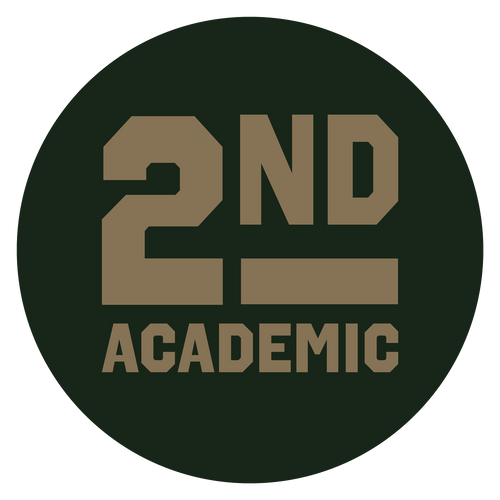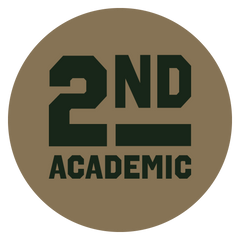
In Conversation With Battenwear's Shinya Hasegawa
Founded in 2011, in the heart of Manhattan's garment district, Shinya Hasegawa's Battenwear is taking the outdoor clothing market by storm. Built for both the thrill seeking adventurer and the avid city goer, Battenwear really is a brand for the people.
First discovering his love of fashion through the vintage catalogues of old, Hasegawa reinterpets his love of the outdoors, surfing and style right across the Battenwear line.
We recently caught up with Shinya to learn more about the inspirations behind the brand, as well as its inner workings.

Shinya: These past 10 years have been a wild ride! We really appreciate the support of our stockists and our sewers and the other craftspeople who help us make the brand. When we started Battenwear in 2011, the outdoor trend hadn’t yet entered the fashion scene like it has today, so we weren’t sure how the brand would be received. The main trend at the time was workwear or something related to the style which served as a contrast to our quirky outdoorsy/surf vibe. Fortunately, this meant that our items could catch buyers’ and magazine writers’ eyes. Our product also has a strong focus on quality which we highlighted from the beginning, and which I think made buyers feel the brand had lasting power.
In comparison to a lot of other brands that started at the same time as us, we’ve taken a slower approach to growth. We have always chosen to spend our time and resources on design and construction and building good relationships in the industry. Maybe that’s why the brand still seems quirky and different all these years later, no matter how many stores we are in.
2ndAcademic : What does an average day in the Battenwear world look like?
Shinya: We’re a “mom-and-pop” business, so a lot of our Battenwear day depends on what our family schedule is like! But on a perfect day when we have enough time, we like to start off with a trail run in Topanga Canyon. There’s a great trail right across from our office, or I’ll surf at Topanga or Malibu Beach while my wife, Carrie, hikes. Then, while we make coffee at the office, we try to clean up (picture a big airy space that used to be a classroom in the 1950s, filled rolls of fabric, shelves of buttons and snaps, racks of Battenwear and vintage clothing, and stacks of clothing catalogues and magazines). With coffee made, it’s emails emails emails most of the morning. We usually bring a bento lunch from home and eat it outside our office with our 91 year old friend who lives in the airstream next to our office. He is one of the most interesting people we know, and his stories always take us to different worlds during our lunch breaks. After lunch, in the times of year when we’re designing a new collection (like now), I draw the items by hand, pick fabrics and trim, develop a theme, and let things take shape of the big corkboard. Carrie works on the PR, sales, and logistics side of things. After orders have been received on a new collection (pre bookings from our stores and our Coop retail program), we move onto production, and I spend a lot of time at the factories and in meetings with my pattern maker and graders and sewers and washhouses.
We leave the office in the late afternoon to pick up the kids and take them to their activities and have dinner together. I usually work late into the night while Carrie is the opposite and wakes up to work early in the morning to get enough work done. Thank goodness for weekends.

Shinya: My early career in Tokyo was always in sales, and then I quit my job and moved to NYC to study marketing at the Fashion Institute of Technology. After graduation, I was working in sales at a vintage clothing company in Tribeca, and I learned through a friend that Daiki Suzuki was looking for someone with vintage clothing knowledge to be his assistant designer for the Woolrich Woolen Mills project for WP Lavori. I didn’t have any design experience but who wouldn’t jump at the chance to work with Daiki? The Woolen Mills project lasted 4 years under Daiki, and during that time, I learned all about how to make clothing in Manhattan’s Garment District. It was like a crash course. Or, actually, maybe more like a 4 year college degree with Professor Daiki as my advisor. Once it was finished, I started looking for other design assistant jobs at other brands, but everyone kept saying, “Why? You should just make your own brand!” I didn’t have a good answer to that, and the more I thought about it, the more the idea behind Battenwear came together.
2ndAcademic : Main Inspirations?
Shinya: I grew up in the 1980’s collecting catalogues from the American outdoor greats, like Patagonia and North Face and Banana Republic. I loved the stories behind the brands and really studied the details of all items. I also collected a lot of vintage mountain parkas, bags, boots. I like well made things and seeing how they’re put together. I also am a longtime fan of American work/sportswear items like Champion sweatshirts and Levi’s. I like how stiff and uncomfortable they feel at the start and how you have to really wash and wear them to make them comfortable. I was also influenced by the Ame-kaji trend that was big in Japan in the 1990’s, taking American casual pieces and mixing them with high fashion for a unique look.
Finally, I’m a surfer and when I started the brand I thought it would be fun to focus on the east coast surf and outdoor lifestyle. A lot of people associate surf and outdoor with the west coast, so playing with the different east coast vibe was fun for me.

Shinya: Actually, ever since 2020, when we moved our design studio out to Topanga, CA, we’ve stopped making as much as we used to in New York. We still keep our relationships with our factories there and do limited projects with them, but nowadays, most of our production is done in Los Angeles and the Bay Area in California. And we’ve started making more items in Japan, and continued production in Canada for certain items. Our basic philosophy is that we should choose the factory based on the sewers and equipment and overall quality, as well as our ability to monitor the production process from start to finish. This also ensures that we’re able to make sure that the working conditions are up to the highest standards, which is important to us. We are so grateful that we were able to start Battenwear in Manhattan’s garment district. It’s an incredible place and it’s where I learned how to design. The pros are many and include the fact you can walk from your pattern maker to your fabric supplier to your factory, all within a couple of blocks. The cons are that the district is getting smaller and factories and vendors are getting edged out by hotels and condos.
2ndAcademic : What’s your favourite product the brand produces?
Shinya: I have a lot of favorites but the Scout Anorak pops to the top of my mind. I love its
2ndAcademic : Which Battenwear items would you take with you on a surfing holiday?
Shinya: Five Pocket Island Shirt and Local Shorts. They’re both my favorites for relaxing and lounging, but they also look nice for dinners out. I also keep my surf stuff in a Stuff Sack, and we always have a number of Packable Totes in our bags which are so useful for travel.

Shinya: I originally thought of Battenwear as a men’s brand, but even from the first season, we noticed that women were wearing it too. And then I realized that when we go to Patagonia or other outdoor stores, my wife always looks at the men’s section first. I think it’s because a lot of women’s outdoor clothing is less interesting. The shapes are sometimes hyper femininized, with hourglass stitching for example. Or the pockets are less functional than they are on the men’s version. I don’t think I’ve changed my designs based on this thinking, but I’m really happy that Battenwear can be for everybody.
2ndAcademic : Any words of wisdom you’d want to share?

